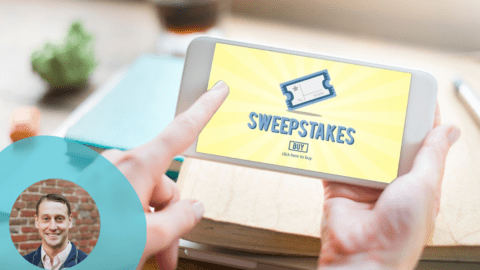Part IV of “Gamification In Retail” reveals how retailers can utilize games and motivational incentives to surge employee engagement and participation. Future implementation and overall sentiment of gamification strategies also will be discussed. Click here to read Part III of the feature, and download a full copy of the report here.
The benefits of utilizing incentives and rewards to encourage shopper activity are becoming more tangible. As a result, many organizations are tapping gamification strategies to increase motivation among employees. In fact, by 2015, more than 50% of organizations that manage innovation processes will gamify those processes, according to Gartner research.
“Enterprise architects, CIOs and IT planners must be aware of, and lead, the business trend of gamification, educate their business counterparts and collaborate in the evaluation of opportunities within the organization,” said Brian Burke, an analyst at Gartner.
This emerging trend, called “Enterprise Gamification,” allows business owners, store managers and retailers to keep pace with modern, tech-savvy workers, according to Gabe Zichermann, author and Summit Chair/CEO of Gamification Co. “This trend is gaining momentum both because of its successes and the unique challenges of managing a millennial workforce that has grown up on games,” he said. “It’s difficult to keep employees’ attention on work tasks when they’re used to ‘World of Warcraft’-level reinforcement.”
Retailers can implement training and employee performance programs that include challenges, games and prizes for completion. By utilizing this method, organizations can increase engagement and ensure that all employees are educated on daily tasks and new rules, and are up-to-date on company developments.
“Depending on your brand’s goals, there are many ways gamification can fit into your human resources strategy,” said Adena DeMonte, Director of Marketing for Badgeville. “Gamification also can be considered a behavior data-based reputation program, which can create even more meaning behind who wins titles such as employee of the month.” Currently, Badgeville is working with organizations including Deloitte and eBay to gamify specific areas of human resources and employee training, DeMonte told Retail TouchPoints. Numerous retailers have shown interest in leveraging a similar strategy for store associates and corporate employees, she added.
According to Gartner, there are four key benefits of driving enterprise engagement via gamification:
1. Accelerated feedback cycles. Employees look forward to annual feedback, such as performance appraisals. In the meantime, companies can keep employees engaged by utilizing game levels and milestones that make associates and team members feel like they’re succeeding on a daily basis, rather than once a year.
2. Well-defined tasks and rules. Although many organizations leverage training programs and employee manuals to make sure all goals and rules are known, gamification helps communicate well-defined tasks and rules, and ensures employees have the tools to succeed.
3. A compelling story that drives action. Gamification allows organizations to create a compelling story that drives participation and creates greater likelihood that goals will be achieved in a time efficient manner.
4. Achievable tasks and rewards. By providing short-term goals, companies can keep employees on their toes and prepared to complete challenges for rewards.
“Where games traditionally model the real world, organizations now must take the opportunity for their real worlds to emulate games,” Burke explained. “Enterprise architects must be ready to contribute to gamification strategy formulation and should try at least one gaming exercise as part of their enterprise context planning efforts this year.”
The Future Of Game Engagement
Consumers are becoming hyper-connected via the web, smartphones and social media, presenting retailers with an opportunity to implement tools and strategies to drive action across these interactive touch points. Gamification presents an optimal way for retailers to engage with customers in-store, at home and in motion, and keep their brands top of mind.
“As today’s consumers evolve from stationary models of entertainment and information gathering, to one where they experience our world by immersing themselves in it, they are going to seek ways to make encounters more meaningful and interesting,” said Scott Forshay, Strategist, Mobile and Emerging Technologies for Acquity Group. “The power of connection and information allows consumers to demand greater degrees of intimacy with the brands they most admire.”
Brand marketing is transforming into a two-way conversation. As a result, it is imperative for retailers to engage with consumers and encourage them to interact with brands across the channels they frequent.
“Industry research shows that 27 million web sites launched in December 2011; that’s 383 million more sites than there were in 2010,” said Rajat Paharia, CEO of Bunchball. “Clearly the audience size is growing, so competition for consumer eyeballs is becoming more intense. Gamification can help retailers differentiate their message, engage more users and provide more compelling experiences.”
Nadim Hossain, VP of Marketing for PowerReviews, a social commerce solution provider, also pinpoints the opportunity for retailers to implement gamification and create more memorable and engaging brand experiences.
“Retailers can now take advantage of tools designed to enhance the three components of social success — content, engagement and measurement — in order to generate sales and more traffic to their sites,” Hossain said. “Interactive marketing strategies such as gamification provide a way to get people engaged easily and keep them engaged for the long term. More than simply making a site more ‘entertaining,’ gamification techniques employ the engaged, productive and rewarding aspects of game play to motivate more consumers to take the actions that drive more business for retailers.”
However, there is a clear differentiation between good and bad gamification, industry experts explain. This makes the entire planning and strategizing process crucial to the success or possible failure of gamification campaigns.
“Simply adding badges to a digital campaign or web site won’t succeed in the long run,” Paharia explained. “Understanding and supporting the goals of the program, and the specific needs and interests of the tech-savvy target audience is critical.”
Doug Galen, Chief Revenue Officer of shopkick also pinpointed the thin line between a successful and poor gamification strategy. “Gamification is a little like cooking: when you do it right, it’s a great thing. But when you do it wrong, it’s horrible,” he said. “If there’s too much gamification, it gets in the way, and it’s actually a turn-off for shoppers.”
As the benefits of tapping incentives, rewards and challenges become more recognized and substantial, retailers will see gamification as a viable business strategy, according to DeMonte. However, to see true ROI results, merchants must be willing to gamify the enterprise across channels.
“It is best for retailers to incorporate gamification across their entire customer-facing experience,” DeMonte said. “This includes their e-Commerce stores and shopping carts, customer review communities, mobile apps, company blogs, and possibly even in-store shopping experiences. The more they can immerse gamification into their overall brand strategy, and create a fully connected network, the more power they have to reward customers for their behavior, and the more impact they will have on their bottom line.”
Click here to download the four parts of the “Gamification In Retail” report as a complete PDF document.












